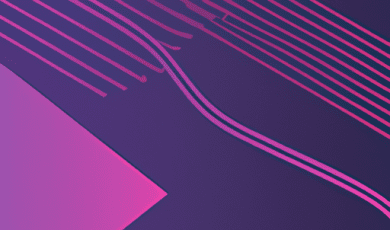Figma Config 2025: What's Next for Collaborative Communication Design?
Exploring the future of teamwork, creativity, and digital communication at Figma's signature event.
Introduction
Each year, Figma Config emerges as one of the most anticipated events for designers, product managers, and creative teams passionate about the evolving landscape of collaborative design. As we set our sights on Figma Config 2025, the excitement is palpable: What new frontiers in collaborative communication design will Figma unveil? How will emerging trends, tools, and ideas redefine the way we communicate visually—and how can your team harness these advancements to collaborate better, faster, and smarter?
In this blog post, we delve deep into the expectations, themes, and innovations shaping Figma Config 2025. Whether you're a seasoned design leader, an aspiring UX/UI professional, or someone eager to stay on top of the latest communication and design events, this overview will help you grasp what's next for the intersection of design, technology, and teamwork.
Main Research: The Future of Collaborative Communication Design at Figma Config 2025
1. The Evolving Role of Communication in Design
Over the past decade, design has transformed from a solo or siloed endeavor into a highly collaborative process, driven by global teams, faster product cycles, and a relentless demand for seamless user experiences. Figma has played a pivotal role in this evolution, offering real-time design collaboration, prototyping, and feedback mechanisms that break down traditional barriers.
In 2025, the very core of communication design is expected to broaden further. It's no longer just about how people design visuals, but how they communicate ideas, gather consensus, and tell compelling stories—together, in real time. Figma Config 2025 is expected to spotlight advancements in:
- Advanced commenting and annotation features that foster richer, context-aware discussions.
- Integration with popular messaging, project management, and version control tools to streamline feedback loops.
- New ways for stakeholders from non-design backgrounds to participate meaningfully in the design process.
2. Artificial Intelligence and Next-Gen Workflows
Last year saw the rise of AI-assisted design features in Figma, and industry watchers anticipate a much deeper integration of artificial intelligence in 2025. Expect Config 2025 to showcase:
- Automated design suggestions: AI-driven prompts that enable faster iteration, accessibility checks, and UX content enhancements within live design files.
- Natural language-to-design tools: Allowing users to describe what they want, and letting AI generate wireframes, mockups, or even fully fledged design systems.
With these developments, collaborative design sessions could become even more interactive and inclusive—empowering product owners, copywriters, and engineers to actively shape prototypes without steep learning curves.
3. The Rise of Asynchronous Collaboration
The global nature of today's design teams means time zones are an ever-present challenge. Config 2025 will likely highlight features that enhance asynchronous collaboration:
- Better change tracking: Visual timelines and summaries that make it easy for team members to catch up on design iterations and discussions.
- Enhanced version comparisons: Allowing stakeholders to quickly see what's changed and why—improving communication, reducing confusion, and speeding up decision making.
- Automated status reports: Tools that summarize design progress for distributed teams.
These improvements spell a future where communication design isn't hampered by distance or time, but rather enriched by inclusion and transparency.
4. Design Systems: Beyond Visual Consistency
Figma has long been a frontrunner in design systems, providing scalable resources for brands and products of all sizes. In 2025, design systems will do more than ensure visual consistency—they'll become the backbone of organizational communication and collaboration:
- Live documentation: Interactive guides, documentation, and component libraries that update in real time, ensuring everyone stays informed.
- Role-based permissions: Enhanced controls for contributors across departments, boosting security and ownership while maintaining open channels for feedback.
- Connected workflows: Seamless links between design, development, and content teams, reducing handoff friction and miscommunication.
Config 2025 will likely introduce more powerful design system analytics and collaboration dashboards, helping organizations measure the impact of communication, sharing, and adoption of design resources.
5. Inclusivity and Accessibility in Communication Design
As design intersects with diversity and global reach, accessibility and inclusivity are coming front and center. Expect Config 2025 to feature:
- Automated accessibility guidance: Instant feedback on color contrast, font sizes, and other vital aspects of accessible design.
- Collaboration templates for diverse teams: Preset flows, checklists, and best practice modules that support a variety of cultural and accessibility needs.
These initiatives will ensure collaborative design is truly for everyone—no matter their background, ability, or location.
6. Real-Time Prototyping and Stakeholder Engagement
The edge of communication design lies in closing the gap between ideas and implementation. At Config 2025, look for:
- Live prototyping: Stakeholders—whether designers, marketers, or customers—can instantly see and interact with evolving user experiences.
- Interactive feedback tools: Embedded polls, sentiment tracking, and usability heatmaps for richer, data-driven discussions.
These features combine the best of synchronous and asynchronous collaboration, effectively taking the concept of "design critique" into the digital age.
Conclusion: Preparing for the Next Chapter in Communication Design
The landscape of collaborative communication design is being reshaped—faster than ever—by cutting-edge technology, new integrations, and a growing expectation for seamless teamwork. Figma Config 2025 stands ready to announce the latest breakthroughs, empowering teams to think beyond borders, time zones, and disciplines.
As you prepare to attend or follow along with Figma Config 2025, keep these trends in mind:
- AI-powered collaboration is set to democratize design, inviting more voices and perspectives to the table.
- Communication design now means designing the ways we interact, iterate, and innovate together—not just the artifacts we ship.
- Accessibility, diversity, and inclusion must form the foundation of every collaborative workflow.
- Data-driven insights will inform better decisions, stronger design systems, and more successful products.
Are you ready to rethink how your team communicates, collaborates, and designs in 2025? Stay tuned for in-depth coverage, key takeaways, and expert analysis from the event. Figma Config isn't just a conference—it's a launchpad for the future of creative teamwork.
Join us as we explore what's next at Figma Config 2025—because the future of collaborative communication design starts here.









